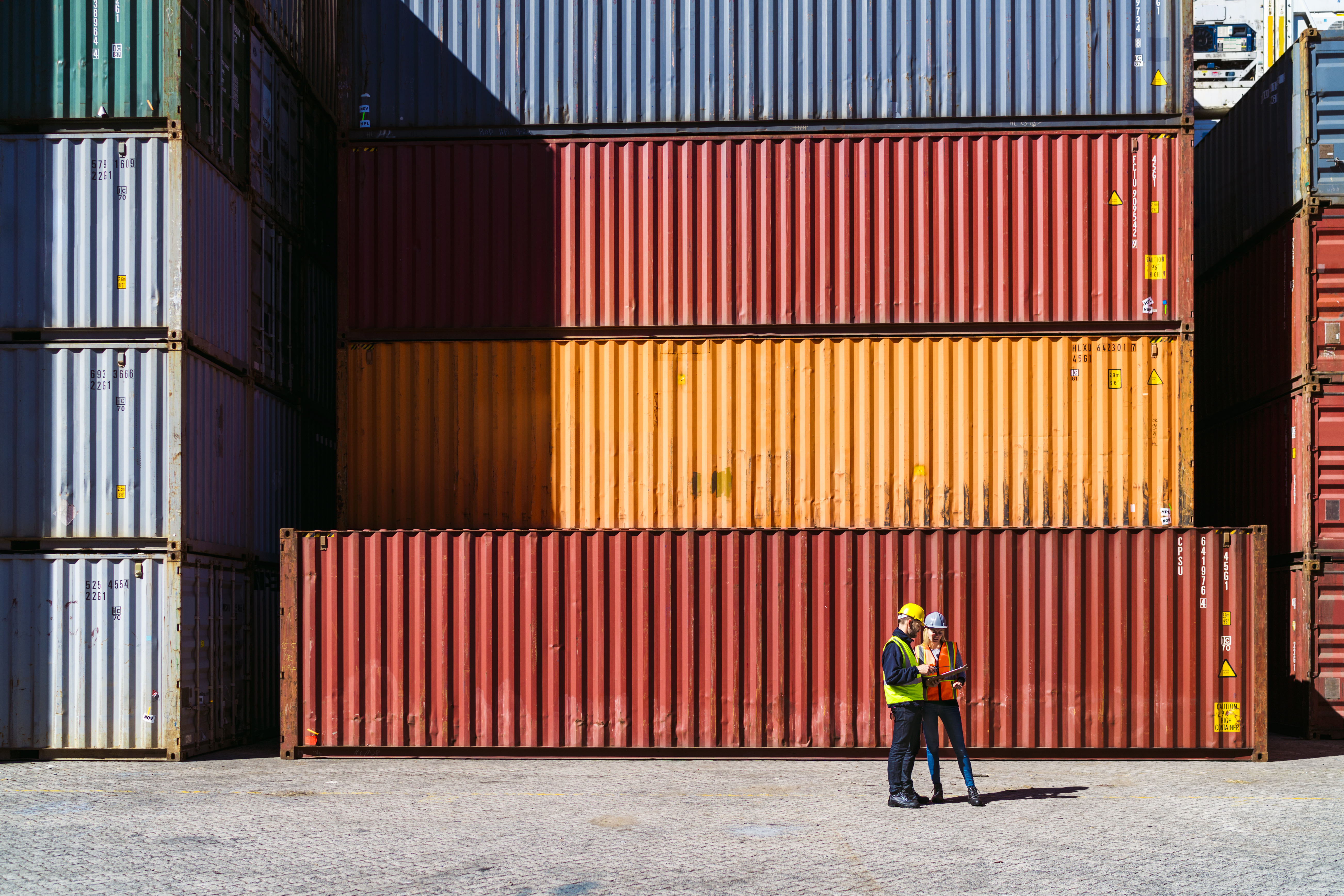
- Blog
Johnson and Johnson: managing supply chain risk in healthcare
How Johnson & Johnson manages supply chain risk in health...
A recap of the Roland Berger × Infios webinar on building supply chain confidence in an age of disruption

The global supply chain landscape is now being defined by volatility rather than stability. Political shifts, trade realignments, and technology disruption have merged to create a level of unpredictability unlike anything seen before.
As Roland Berger senior partner and global head of Supply Chain & Logistics Sebastian Feldmann put it during the recent Roland Berger × Infios webinar:
“We’ve entered into the dawn of what we call the SC POWER Era; a time when supply chains must move beyond cost-to-serve efficiency into Resilience, Flexibility and Sustainability to become true creators of business value. The times of managing supply chains from a pure box-shipment perspective are finally over!”
The session brought together leaders from strategy consultant Roland Berger and Infios to explore what this “POWER Era” really means and how modern network design, AI, planning and execution technologies are redefining resilience for the decades ahead.
“We’re moving beyond shipping boxes. Supply chains today are about shaping the business itself, not just fulfilling it.”
The SC POWER era: from efficiency to confidence
Roland Berger describes this next phase as the SC POWER Era; a time when supply chains must move from being efficient to being confident.
The difference lies in intention: efficiency looks backward at cost and process; confidence looks forward at adaptability and value creation.
The supply chain today isn’t just about shipping boxes; it’s about shaping how the business operates.
To meet this moment, Roland Berger introduced the POWER model; five capabilities that define future supply chains: Planned, Orchestrated, Well-informed, Empowered and Resilient.
| Letter | Meaning | What It Looks Like in Practice |
|---|---|---|
| P – Planned | Data-driven and business-aligned planning | Integrated S&OP / IBP linked to financial goals |
| O – Orchestrated | Seamless collaboration across functions | Procurement, engineering, and production in sync |
| W – Well-informed | Real-time data and automation | AI-enhanced decision-making and predictive analytics |
| E – Empowered | Supply chain as strategic value driver | Cross-functional influence at executive level |
| R – Resilient | Built-in adaptability and sustainability | Multi-node networks and proactive risk design |
Each pillar connects to a single truth: resilience isn’t reactive anymore; it’s “by design”.
This single truth idea was tested during the webinar through two live audience polls; both revealing how today’s supply chain leaders are responding to this shift in real time.
“Cost will always matter, but global supply chain management will require an even higher focus on balancing robustness with scalability, flexibility with resilience and also cost with the ability to optimally serve the client.”
What supply chain leaders told us
When asked about their top priorities for the next 12 months, most participants still cited cost reduction. But almost equally, they highlighted flexibility and technology adoption. This is a clear signal that leaders are no longer chasing savings alone but seeking scalability and confidence.
Webinar Poll Snapshot:
Participants named robotics and automation as the most impactful technologies in the past three years, with AI and predictive analytics following closely.
Together, these results reflect a clear direction: organizations are investing in systems that help them see sooner, decide faster, and recover stronger — the practical definition of the SC POWER Era in motion.
Full poll results and commentary are available in the on-demand webinar replay.
“AI isn’t lagging; it’s already there. Automation delivered the first wave of cost efficiency and AI will drive the next wave of intelligent decision-making.”
The Infios perspective: execution maturity as the engine of resilience
For Steven Timberlake, VP Sales Northern Europe at Infios, resilience isn’t an abstract concept; it’s a measurable outcome of execution maturity.
Infios defines execution maturity through three core technology pillars that bridge strategy and operations:
1. Order Management (OMS): end-to-end orchestration
A single view of inventory across warehouses, stores, and vendor networks enables faster, more profitable fulfillment decisions.
When nodes are connected, resilience improves automatically: if one location fails, others can flex.
Example: Apparel company Komar reduced its order release cycle from eight hours to eight minutes using Infios OMS, while cutting customer service handling by 40%.
2. Warehouse & fulfillment (WMS): the productivity multiplier
Automation, robotics, and AI-powered labor planning are redefining warehouse productivity.
With Infios WMS, French retailer Boulanger achieved an ROI in under 12 months, processing 20% more B2C orders without increasing headcount.
Optimized slotting, digital twins, and better space utilization drive both efficiency and sustainability; reducing waste while improving throughput.
3. Transportation (TMS): control, compliance and carbon optimization
Visibility across multimodal networks is the final layer of resilience.
For healthcare manufacturer Mölnlycke, Infios TMS created a full transportation control tower, enabling end-to-end auditability across carriers and shipments which is essential for compliance and cost control.
“You can’t jump from ad hoc to fully autonomous overnight. But every improvement in execution maturity directly increases resilience.”
Designing for the future: from co-pilots to autonomous supply chains
Steven Timberlake also looked ahead to how agentic AI - self-learning AI agents, will reshape execution in the next 24–36 months.
“Soon, AI agents will autonomously analyze social signals, predict emerging demand, and reposition inventory all without human intervention. The near-term phase is co-piloting; full autonomy will follow within five years.”
Yet both Roland Berger and Infios agree technology alone isn’t enough. Future supply chains need a strong foundation in processes, capabilities, partnerships – and integration into the overall company strategy.
As Feldmann concluded:
“Technology defines competitiveness, but only if the foundations are in place: clean data, connected planning, and end-to-end transparency. Supply Chain strategy needs to be an integrated part of the company strategy and as such, it sets the pace for key investments like AI for a firm.”
Key takeaways
“Every step toward digital execution maturity is a step toward resilience. The organizations investing now in adaptability will define the next decade of supply chain leadership.”
